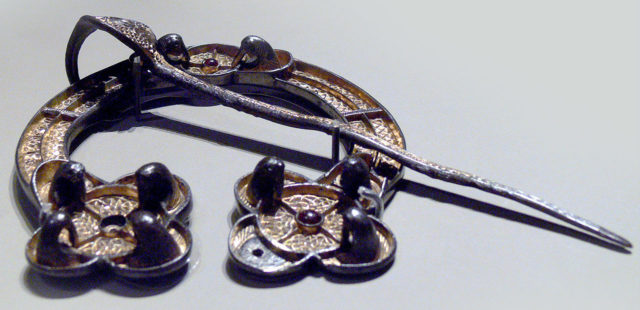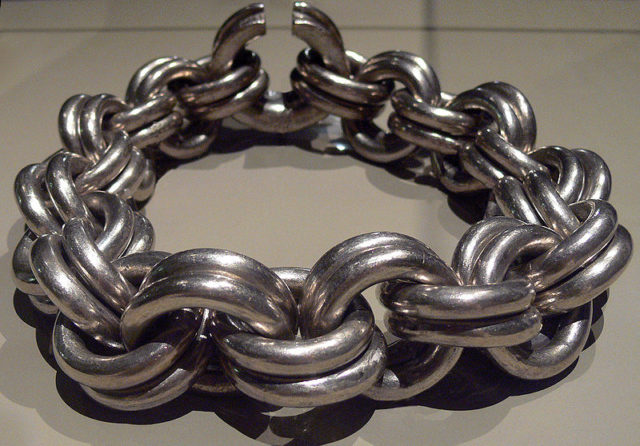Often typecast as tattooed barbarians, the Picts were famous for their aptitude for war. However, recent findings suggest the ancient peoples of Scotland also had a talent for carving stone and modeling silver. Archaeologists working in Northern Scotland have uncovered a hoard of over 100 silver items, including coins, brooches, and bracelets. The discovery, which dates back over 1,500 years to the late Roman era, has challenged traditional conceptions of ancient Scottish history, proving the Picts were far more than warlike barbarians.
The Picts were a group of tribes who inhabited the region north of the Forth and Clyde during the Late Iron Age and Early Medieval era. During the late third century AD, the Picts launched several attacks against the northern border of the Roman Empire. According to accounts, the Picts fought stark naked, and the war paint featured in the movie Braveheart is a reference to Pictish martial culture. The tradition of fighting naked, particularly in the cold Scottish environment, did no harm to the tribe’s reputation for ferocity. Despite their inferior training and equipment, the Picts fiercely resisted the advancing Roman legions, resulting in the construction of Hadrian’s Wall in the during the second century AD.

The silver found consisted of minor fragments of sheet silver, lacerated shards of objects, and some intact examples which may have belonged to notable members of society during the period. A crew led by Dr. Gordon Noble, a senior researcher in the department of archaeology at Aberdeen University, testified to the findings in a study published in the journal Antiquity.
The investigators were shocked when they found more than 100 silver items. The hoard consists of late Roman coins, military gear, personal effects including brooch and bracelet remains, ingots and Hacksilber parcels, and fragments of cut, curved and fragmented silver. According to the investigators, there were initially two man-made rock circles, one dating back to the Neolithic and one to the Bronze Age (B.C. 1670 to B.C. 1500). The location of these stone circles is now an enormous agricultural hub; this intense farming has destroyed all traces of these man-made rocks.
Three silver items were first excavated at the stone circle site over 170 years ago. The silver has been dated to the sixth or seventh century AD, after the Romans abandoned Britain and before the first Vikings landed. During the spring of 2013, two developments in Scotland came together to reexamine the site, and they found a significant number of silver objects. The items were quickly identified as belonging to a tribe of Picts.

A new investigation of the field revealed that the Gaulcross hoard was much larger than initially thought, and is now the northernmost example of a pre-Viking hoard. Evidence shows that the Picts had access to vast amounts of silver and, surprisingly, that they were not careful about managing what was such a valuable resource. The researchers discovered that the objects had been broken up, ready to be melted down and made into new items.
This find has led to speculation about the relationship between the Picts and the wider ancient world. How did they acquire Roman silver in the first place, and what sort of new products were made from it? This theme of recycling is so significant in understanding the hoard, and may explain the erratic nature of several of the specimens. Most other silver would have been melted down, but luckily for the archaeologists, this buried treasure escaped destruction.
This discovery will help to illuminate the history of the Dark Ages in Britain, which followed the collapse of the Roman Empire in the fifth century. The Roman name for the people was Picti, which means “painted people,” a word which the tribes themselves never used to describe themselves. It is hoped that the unearthing of new archaeological sites will cause the history of ancient Scotland to be better understood.
